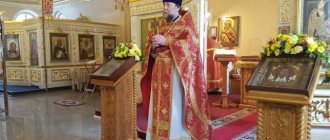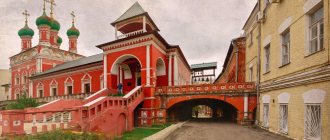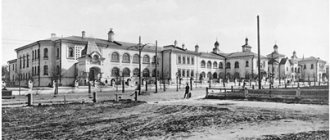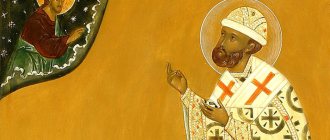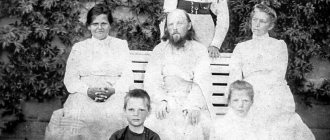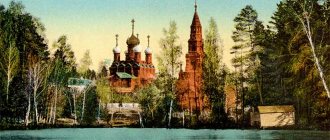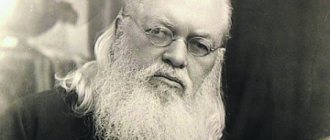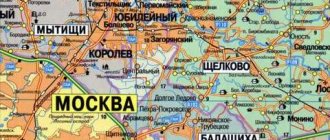The Christian burial ritual has many folk traditions, some of which go back centuries. One of these rituals includes throwing handfuls of earth into the grave of the deceased during burial. Despite the prevalence of the ritual, many cannot explain the meaning of this ritual, where it came from, and how to carry it out correctly. The ritual agency “Eden” in Dnepr will tell you about all the rules of the ancient ritual, with a short excursion into history.
Where did the tradition of throwing a handful of earth into the grave come from?
Many traditions have come to us since pagan times. Some of them have taken root and are used among the people. The following is known about the ritual of throwing earth into the grave of the deceased:
- In pagan times, the bodies of the dead were burned, the ashes were collected in an improvised urn, which was surrounded by the belongings of the deceased. All relatives and friends threw handfuls of earth on top of the urn and things until they were completely covered with a layer of soil. A domina was built around the grave - a dwelling for the soul of the deceased, where gifts and treats were brought.
- The ancient Slavs believed that the earth that covers the mortal body of the deceased is healing and is particularly fertile. And therefore, everyone at the funeral tried to kiss the healing earth, throwing a handful of it into the grave.
- Coffins appeared in the 6th century, and only rich and noble people were buried in them. During burial, it was customary to pour as much earth as would fit into the deceased’s hat and pour it directly onto the coffin. When burying soldiers, earth was poured into his helmet. Afterwards, the grave was covered with earth, forming a burial mound.
- With the emergence of Orthodoxy, this tradition underwent changes. The ritual associated with throwing earth on the coffin was associated with the frailty of human life. In this way, close people say goodbye to the deceased, burying him in the earth, and hoping for his resurrection.
The tradition that has come to us from time immemorial is a reminder that human life is not eternal, and everyone will someday be buried. In all centuries, burial ground was considered unusual, and therefore, in pre-revolutionary times, many churches were built in cemeteries.
Is it possible to give land after a funeral?
Washing and dressing the deceased.
How to pray for a person in the first days after his death.
Carrying out the body. Church funeral service. Funeral service in absentia.
Burial
Washing and dressing the deceased. Not a single nation left the bodies of their dead without care, and burial was always accompanied by appropriate rites.
The holy faith of Christ forces us to look at a Christian with respect even when he lies lifeless and dead. Now the body of this Christian is a prey to death, a victim of corruption, but still he is a member of the Body of Christ. In the ruins of this once majestic temple, the life-giving Spirit of God hovered, lived and acted (1 Cor. 6: 15, 19). The body of a Christian is sanctified by the communion of the Divine Body and Blood of Christ the Savior. Is it possible to despise the Holy Spirit, whose temple was the deceased? Subsequently, this dead and corruptible body of a Christian will come to life again and will be clothed with incorruption and immortality (1 Cor. 15:53). Therefore, our Orthodox Church does not leave her child without maternal care even when she has passed from this world to the distant and unknown land of eternity.
The touching rites performed by the Holy Church over the tomb of a Christian have a deep meaning. They are based on the inspirations of the holy faith, originating from the God-enlightened apostles and the first Christians.
The body of the deceased is washed immediately after death. Ablution should extend to all parts of the body. Washing occurs as a sign of the spiritual purity and integrity of the life of the deceased, and also so that he appears in purity before the face of God after the Resurrection.
You need to wash your body with warm water, but not hot, so as not to steam it. When they wash the body, they read the Trisagion (“Holy God, Holy Mighty, Holy Immortal, have mercy on us”) or “Lord, have mercy.” A lamp or candle is lit in the house, which burns as long as the deceased is in the house.
When washing, you need to use soap and a soft cloth (or sponge).
After washing, the Christian’s body is dressed in new, light, clean clothes. New clothes seem to indicate a new garment of our incorruptibility and immortality (1 Cor. 15: 53). Clothes are worn according to the person's rank or service. They depict that after the Resurrection, a person must give an account to God of how he fulfilled his duty in what he was called to.
If suddenly a person did not have a cross, then they must put on a cross.
The hands and feet of the deceased are tied (they are untied before leaving the house). Hands are folded so that the right one is on top. An icon (or cross) is placed in the left hand of the deceased, for men - the image of the Savior, for women - the image of the Mother of God. Or you can do this: in the left hand - a cross, and on the chest of the deceased - a holy image. This is done as a sign that the deceased believed in Christ and surrendered his soul to Him, that in life he foresaw (always had) the Lord before him, and now moves on to the blissful contemplation of Him with the saints.
When the time comes to place the deceased in the coffin, then they sprinkle holy water on the body of the deceased and his ark (coffin) from the outside and inside. You can also cover it with incense, then the body is transferred to the coffin.
A crown is placed on the forehead of the deceased, which is given in the church when the deceased is brought for the funeral service. Some people buy a whisk for themselves in advance.
A deceased Christian is adorned with a crown, like a fighter who has left the field of achievement with honor, like a warrior who has won a victory. On the corolla there is an image of the Lord Jesus Christ, the Most Pure Mother of God and John the Baptist with the inscription: “Trisagion”. This shows that he who has completed his earthly course hopes to receive a crown for his exploits (2 Tim. 4: 7, 8) only through the mercy of the Triune God and the intercession of the Mother of God and the Forerunner of the Lord John.
A pillow, usually made of cotton wool, is placed under the shoulders and head of the deceased. The body is covered with a sheet.
The coffin is supposed to be placed in front of the home icons (in the front corner), turning the face of the deceased towards the icons.
Candles (or at least one candle) are lit around the coffin as a sign that the deceased has moved into the realm of light - into a better afterlife.
How to pray for a person in the first days after death? When the body of the deceased is washed and dressed, they immediately begin to read the canon called “Following the departure of the soul from the body” (see “Orthodox prayer book”). If a person died not at home, then on the day of his death this canon is still read.
The reading of the canon is preceded by initial prayers, then Psalm 90, then in order.
Like the previous canon, “Succession” is divided into nine songs. Before the troparia (beginning with a red line) the verse (chorus) is read: “Rest, O Lord, to the soul of Thy departed servant, (thy departed servant)” (name).
The canon is read “for the one who died,” that is, for a person who has just died. Therefore, when reading the refrain “Rest, O Lord, the soul of Thy departed servant (Thy servant)” (name), one should not pronounce other names of the deceased (parents, relatives, acquaintances, etc.). The canon is read only for one.
At the end of the “Followment” there is a special prayer appeal to God with the pronunciation of the very name of the deceased: “Remember, O Lord our God, in the faith and hope of the eternal life, the repose of Thy servant (Thy servant), our brother (our sister) (name )...". After this prayer they read: “Eternal memory to Thy servant (Thy servant) (name), Lord.”
“Following” is read on behalf of the deceased(s) with the purpose that God’s mercy through our prayer for the deceased will ease the soul’s bitterness at parting with the body and the first moment of the soul’s stay outside the body.
Here are prayer requests from this canon. “The deceased departed from us, placing his hope in You, Savior. But You, O Lord, are the Most Merciful God, grant him generous forgiveness” (canto 5).
How is the ritual carried out among other peoples?
In Ossetia there has always been a ritual of dedicating the land. During the funeral, the elder of the settlement or family had to take a handful of earth three times and sprinkle it crosswise on the chest of the deceased, while pronouncing the words “so that he would enter the land destined for him without sin.” The same custom was dictated by the Armenian Church. The priest had to sprinkle earth on the deceased, and only after that the body was covered with a shroud and lowered into the grave.
In Islam, after the body of the deceased is lowered into the grave, every man present at the funeral throws a handful of earth with the words “We all belong to Allah and truly we will return to Him.” After the burial mound is built, it is watered with water and seven handfuls of earth are thrown in, while a prayer is recited.
In Judaism, after lowering the coffin into the grave, it is customary to throw three shovels of earth. The ritual is performed by everyone who comes, but the shovel is not passed from hand to hand, but is placed or stuck into the ground each time. During the ceremony, everyone says, “May his soul rest in peace.”
How many handfuls of earth do you need to throw?
At Orthodox funerals, it is customary to throw one or three handfuls of earth onto the lid of the lowered coffin. According to the priests, the number of handfuls does not matter; the most important thing at this moment is to pray for the soul of the deceased, forgive him of old grievances and debts, and not harbor any grudge against the newly deceased.
This tradition is important both for the one who says goodbye and for the deceased. A person throwing earth into a grave, at the moment, seems to be left alone with the deceased, and can ask forgiveness from the deceased, forgive his sins and wish him a good journey in the new world. It is important for the deceased to calmly transition to another world, and if the soul feels that it has been forgiven by loved ones, then the transition will be less painful. There is an opinion that unforgiven grievances of the living can cause severe mental suffering to the deceased.
Among the common people there is another opinion on this ritual. It is believed that the ritual helps the deceased to remain in the world of the dead and not disturb the living with their presence. If someone at a funeral ignores the ritual, the soul of the deceased can return and cause suffering to the living in the form of nightmares. Of course, this superstition is speculation, and the church denies the existence of these phenomena.
Church of St. Alexy, Metropolitan of Moscow
How to properly bury loved ones
ABOUT THE ABSENTIA FUNERAL SERVICE
Sometimes a funeral service in a church is physically impossible; then the funeral service is performed at home, or, if it is not possible to invite a priest to the house, then the funeral service for the deceased is performed in absentia in the nearest church.
After saying goodbye to the deceased in the cemetery (before nailing the coffin), covering the deceased with a cover or white linen, they sprinkle him with earth in a cross shape. To do this, the consecrated earth received in the temple is divided into three approximately equal parts and with the singing of the “Trisagion”: “Holy God, Holy Mighty, Holy Immortal, have mercy on us,” the body is sprinkled three times in a cross shape, strictly observing the correctness of the cross - from the head to the feet and from the right shoulder to the left. If the deceased has received unction, then the remaining cathedral oil is also poured onto the cover while singing “Alleluia” (3 times).
If an Orthodox Christian has already been buried without a funeral service, and after some time, sometimes years, the relatives still want to perform a funeral service for the deceased, then the church again orders an absentee funeral service. The consecrated earth received at the funeral service is sprinkled crosswise with the singing of the Trisagion on the grave mound.
If the soil received in the church is not delivered to the grave on the day of the funeral, there is no need to be afraid to bring it home. This fear is superstitious: the land is consecrated in the church and must be treated as a shrine. It is kept in the place appropriate for the shrine, usually in the holy corner behind the icons.
ABOUT DELIVERY OF THE BODY TO THE EARTH
When the coffin with the body is taken out of the church after the funeral service, the angelic song “Trisagion” is sung. The coffin is carried out so that the face of the deceased is facing the exit (feet first). If the priest accompanies the coffin with the deceased to the grave (which now, unfortunately, happens rarely), then the last litany and the rite of committing the body to the earth are performed at the cemetery.
The grave and tombstone of a Christian should be arranged simply and modestly. Their goal is to show other Christians that their brother in faith is buried here, and to preserve his name for posterity. The grave is the place of future resurrection, so it must be treated with reverence. It must be kept clean and tidy.
The grave is arranged so that when the coffin is lowered, the face of the deceased is turned to the east, as a sign that he is moving from the west of life to the east of eternity, and as a sign of faith in the Resurrection of Christ. The depth of the grave must be at least 180 centimeters. The lateral excavations made in some cases for the coffin, supposedly relieving the deceased from the pressure of the earth, are considered by the Church to be superstition. The same applies to the construction of a ceiling made of boards or a brick vault over a coffin lowered into the grave.
The custom of marking a burial site with a hill dates back to ancient times. The Christian Church, having accepted and preserved this custom, decorates the grave mound with the victorious sign of our salvation - the Honest and life-giving Cross of the Lord, the silent preacher of blessed immortality and resurrection. The cross is placed at the feet of the buried person, as if in front of his face.
The cross is made from any durable material; it must be eight-pointed and of the correct shape. In Orthodox Russia, the most often used is a wooden eight-pointed cross with two spoons fixed on top in the form of a roof, the so-called “cabbage roll”. We must especially ensure that the cross on the grave is not askew, that it is always clean, well-groomed and, if necessary, painted. The surname, full name and patronymic of the deceased, as well as the dates of his birth and death are placed on the cross. Turning to the cross, people coming to the grave will bring prayers, so it is allowed to place a small icon on the cross, but not a photograph of the deceased. If the Crucifixion is depicted on the cross, then the side where the Crucifixion is, the cross should be facing the face of the deceased. Expensive monuments and tombstones are not befitting of a Christian’s grave.
Believing in the final resurrection, Christians shun the pagan custom of corpse burning (cremation), revived in our century, leading to the complete destruction of the body, which has a clear image of fiery Gehenna.
When the body is lowered into the grave, the Trisagion is sung again. All those accompanying the deceased on his last journey, before closing the grave, throw a lump of earth into it. Thus, the body is given over to the earth as a sign of submission to God’s decree: “You are earth and you will go back to earth” (Gen. 3:19). To perform funeral prayers at the cemetery, it is better to bring with you an icon or Cross depicting the Crucifixion of the Lord.
ABOUT REMEMBRANCE OF THE DECEASED
Prayer for the departed is the greatest and most important thing we can do for those who have passed on to another world. Holy Tradition indicates the days that Orthodox Christians should especially devote to the memory of the departed. These are primarily the third, ninth and fortieth days after death. Tretins are performed in honor of the fact that the deceased was baptized in the name of the Father and the Son and the Holy Spirit - God, one in the Trinity, as well as in honor of the three-day Resurrection of Jesus Christ. On the third day the soul passes through legions of evil spirits who block its path, blaming it for the sins it has committed at their instigation. When there is a commemoration in church on the third day, the soul receives relief from sorrow and good hope from the angel guarding it. On the same day she ascends to heaven to worship God.
Until the ninth day, the soul is shown the beauties of heaven, and the rest of the time, until the fortieth day, is the torment and horrors of hell. On the ninth day, a commemoration must be performed in the church so that the soul of the deceased, through the intercession and prayers of the nine angelic ranks, is worthy of being counted among the souls of all saints.
Only on the fortieth day is the soul assigned a place until the resurrection and the Last Judgment. Forty days is the time when the fate of the soul of the deceased is decided, therefore at this time favorable changes in the state of his soul are possible.
WHAT CAN WE DO FOR THE DEAD
Anyone who wants to show their love for the dead and give them real help can best do this by praying for them and, in particular, by remembering them during the liturgy (mass), when the particles taken from the sacred bread for the living and the dead are immersed in the blood of the Lord with the words: “Wash away, Lord, the sins of those who were remembered through Thy Honest Blood, through the prayers of Thy saints.” We cannot do anything better or more for the departed, especially in those forty days when the soul follows the path to eternal settlements.
The Holy Church decided to commemorate the dead for forty days (Sorokoust) and especially on the fortieth day (Sorochin). As soon as a person has died, it is necessary to immediately take care of the funeral service, and then the magpie, i.e. about the forty-day commemoration during the Divine Liturgy. If possible, you can order forty meals in several churches. How to do this? Come to the church before the start of the service and order a mass of repose or magpie (state the full name of the deceased). After mass, a memorial service can be celebrated; the prayer will be more effective if the one who remembers it himself repents and receives communion.
ABOUT FURTHER PRAYER ASSISTANCE TO THE DECEASED
Let us not weaken in prayer for the deceased even after forty days after his death - even after this period, God’s mercy does not leave the soul without hope, even if by its own deeds it was condemned to torment. This hope remains until the terrible judgment. The Lord waits for those close to him to try to make up for the sins of such a person by doing godly deeds that the deceased himself did not manage to accomplish during his lifetime. From now on, every anniversary of his death will be a special day of his remembrance. Angel Day, i.e. the day of remembrance of the saint whose name the deceased bore, as well as the birthday. These days it is good to order a commemoration at the liturgy and serve a memorial service.
Alms also facilitate the afterlife of the deceased. Even if by mistake alms are given to an unworthy person, Christ invisibly accepts it. But in general we should try to give to those who really need it. There are many of these among those who silently endure need, poverty, loneliness, and illness. An ancient and universal Christian custom is to donate to churches and monasteries.
Those who have died in wickedness and unrepentance and who have completely extinguished the spirit of Christ within themselves will not be helped by any prayers of the brothers still living. ABOUT UNIVERSAL
PARENTS' SATURDAYS
The days of ecumenical (universal) remembrance of the dead are called parental Saturdays.
1. Meat Saturday occurs 8 days before the start of Lent.
2. During Great Lent, the second, third and fourth Saturdays are dedicated to the remembrance of the dead. On other days of this fast, neither funeral liturgies nor memorial meals are celebrated, and the requiem service on the fortieth day is not postponed.
3. Trinity Saturday is the day before the Feast of Pentecost. On this day, with the special gracious power of God, the Church dares to pray for the righteous and sinners, and even “for those in hell.”
4. Tuesday of St. Thomas Week (second week of Easter) - Radonitsa. On this day, the living rush to the cemetery to greet their deceased neighbors with the joyful news of the Resurrection of Christ.
5. September 11 /new style/, the day of the beheading of St. John the Baptist (strict fasting is required), commemoration of Orthodox soldiers is performed, killed for faith and fatherland on the battlefield.
6. Demetrius Saturday is celebrated a week before November 8 (new style), the day of the Great Martyr Demetrius of Thessalonica. Just like the previous one, it is dedicated, first of all, to the commemoration of fallen soldiers.
During these days, serve custom masses for your loved ones, pray at the memorial service (general prayer singing for the dead), and at home read kathisma 17 from the psalter, remember the dead at meals.
On the days of general remembrance of the dead, it is good to visit the graves of your loved ones; it should be recalled that a few days before parental Saturday it is necessary to clean up the grave, straighten the cross, update and paint the fence, and remove garbage. This is unacceptable to do on the day of remembrance itself. On this day, it is better to just sit near the grave, remember the deceased, and pray for him. It’s good to serve lithium at the grave. On the day of Radonitsa, under no circumstances should you place painted eggs on graves - this is a pagan custom. It is forbidden to drink alcoholic beverages in a cemetery, and even more so it is unacceptable to pour vodka into a grave mound.
Teach your children to turn to God, at least in a short prayer: “Rest, O Lord, the souls of your departed servants (names), all our relatives and friends, and grant them the Kingdom of Heaven.”
(The ending follows...)
From the book “How to die like a Christian?”
Which hand should you throw the ground with?
The earth is considered an ancient source of power, which people have used since ancient times and passed on to their descendants. According to the legends of our ancestors, the left hand receives energy, and the right hand gives back. And therefore, so that the ritual with earth does not cause troubles in life, it is customary to throw handfuls of earth with the left hand, standing on the left side of the grave.
The priest should be the first to throw a handful of earth, marking the coffin with a cross. All gestures of the priest are accompanied by prayers for the remission of sins. Next, the priest sprinkles the body with ashes from the censer, which symbolizes the extinction of life and the transition of the soul to another world. The lid of the coffin is nailed down by funeral agency workers and lowered into the grave using linens. Then the priest throws some more earth onto the already lowered coffin.
Next, the ritual is observed by close relatives of the deceased, then by friends, colleagues and co-workers. The earth must be taken from the edge of the grave, but carefully so as not to slip on the wet ground and fall down. You can take the soil with a handkerchief, which is distributed to everyone who comes, or you can take it with your bare hand. It’s not worth saying the phrase “May the earth rest in peace”, since it has pagan roots, and you can find out its origin in more detail here. It is better to wish the deceased “the Kingdom of Heaven” and peaceful repose.
After visiting the cemetery and before the funeral meal, you need to wash your hands properly to wash away not only the grave dirt, but also the cemetery energy.
